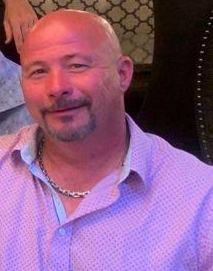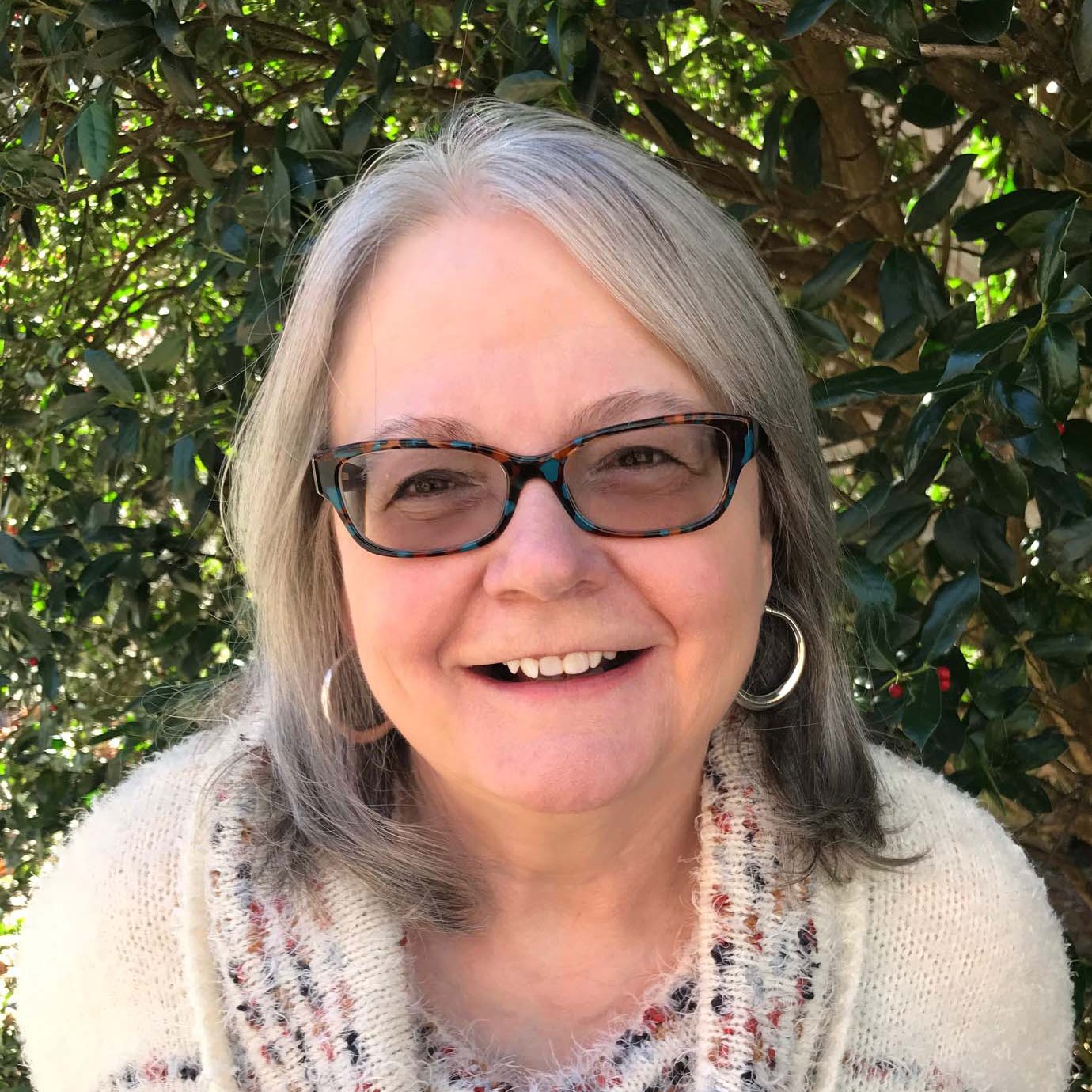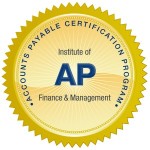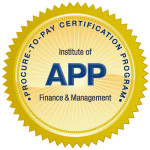
- Membership
- Certification
- Events
- Community
- About
- Help
In many organizations, AP and AR are viewed as separate entities, each with its own set of challenges and objectives. However, Les Smeyers reveals how these two essential functions are, in fact, parts of a greater financial operation. Understanding and leveraging the synergy between AP and AR can lead to more efficient processes, improved cash flow, and stronger overall financial health for your organization. You’ll learn more AP and AR teams can collaborate effectively to align their goals, ensuring seamless financial operations, all while Les shares actional insights based on his extensive experience and background.

Les Smeyers
Director of Finance, Global Business Services, and Order-to-Cash, Celestica
Les Smeyers is the Director of Finance, Global Business Services, and Order-to-Cash for Celestica. Over his 20-year career with the company, Les has held a number of senior finance roles, specializing in invoice dispute management, customer and supplier credit risk, and enterprise risk management. Les was a lead contributor in the re-engineering of Celestica’s global credit policy and allowance for doubtful accounts, as well as led many different continuous improvement initiatives. He holds a Bachelor of Arts in Economics and a Bachelor of Science from the University of Toronto.

Royce Grayson Morse
Royce Grayson Morse has been working with IOFM for the past eight years, writing and editing content about Accounts Payable, Accounts Receivable, automation, and industry trends. She has worked on the IOFM Certification Guides and written the associated examinations; edits the annual 1099 and 1042 Master Guides; conducts podcasts; and manages the IOFM.com website content.
Grace Chlosta: Welcome to the IOFM podcast. This is a podcast for accounts payable and accounts receivable professionals who want to stay in the know with current AP and AR trends and ideas. We'll be interviewing professionals in this space on a wide variety of subjects, including automation, artificial intelligence, career growth, compliance, leadership, and much more.
Today we'll be interviewing Les Smeyers. Les is the Director of Finance, Global Business Services, and Order-to-Cash for Celestica. Over his 20-year career with the company, Les has held a number of senior finance roles specializing in invoice dispute management, customer and supplier credit risk, and enterprise risk management. Les was a lead contributor in the re-engineering of Celestica's global credit policy and allowance for doubtful accounts, as well as lead many different continuous-improvement initiatives. He holds a Bachelor of Arts in Economics and a Bachelor of Science from the University of Toronto.
00:01:04
He will be interviewed by Royce Grayson Morse, Managing Editor at IOFM. Royce Grayson Morse has been working with IOFM for the past nine years, writing and editing content about accounts payable, accounts receivable, automation, and industry trends. She's worked on the IOFM Certification Guides and written the Associated Examinations, edits the annual 1099 and 1042 Master Guides, conducts podcasts, and manages the IOFM.com website content.
Royce Morse: Hi, Les, and welcome to the podcast. How are you?
Les Smeyers: Thank you. I'm very well. Thank you. Thank you for inviting me. I appreciate it.
Royce Morse: Yeah, this should be an interesting conversation. What we were wanting to talk about today with you is how you can develop synergy and a relationship between accounts payable and accounts receivable that benefits not only both of those organizations, but the overall business.
00:02:03
Let's get started by you telling me your experience, your résumé, if you will, in these two areas, and how that's informed your perspective on this topic.
Les Smeyers: Absolutely. I appreciate the question. Really, what it comes down to is an individual like myself, or in general, having the working knowledge of both sides of the equation. At the high level, the synergies begin with having one operational structure, if you will. It becomes siloed if one leader or one group is not managing both the accounts receivable side of the equation and the accounts payable side of the equation.
00:02:52
That's one of the things that we did here at the company is we eventually rallied behind the fact – and I had been pushing this for many years – to have one structure so that each operational team could learn from each other. I would highly recommend that in the spirit of the synergy aspect because once you have one operational structured leader, then that synergy can begin. If you don't, then you still are working in that siloed approach.
Royce Morse: Yeah, that makes a lot of sense. Before we get into what those synergies might be, what was the resistance? In your experience, both at your current organization and previously, did you run into resistance against that approach?
00:03:43
Les Smeyers: It was never a resistance factor. It was more of the payables operation was always tied to procure-to-pay. The receivables operation was always tied to order-to-cash. The balance between – and one was deemed more a supply chain operation versus receivables, which was always deemed more of a finance function.
Really, my rally began in the middle 2000s to try and get both operations under one umbrella. It was education more than anything. It was trying to build the justification for one org.
Royce Morse: That makes a lot of sense. I can understand where management was coming from on that, but it's kind of surprising, too, that they didn't take the approach that these are both financial roles, both managing the company's cash, and that it would make a lot of sense for people to put their heads together and get some synergies between them.
00:04:59
Les Smeyers: Absolutely. This is one of the things that I have brought to the forefront. Everybody sees an FP&A group or the corporate accounting group being the finance team. The receivables and payables operation, while everyone might believe that it is more of a sub-tiered finance operation, frankly, it is as important as pulling together your balance sheet and P&L at a corporate level. It's what contributes to making all of that happen.
At the end of the day, when we had the opportunity to consolidate, it was the right thing. That's one of the things I'm actually pretty proud of is bringing the importance of both operations to the forefront and helping even the finance team understand that these are not just mundane roles, that they are actually contributing to some of the metrics that we are following.
00:05:58
Royce Morse: So talk to me like I'm the CEO and you're making your case. What are the creative solutions that you can put forth that might persuade me to say, "Okay, let's put these two teams under one manager, one operation"? Where are the benefits? Sell me.
Les Smeyers: In sitting in front of the CFO of any company, I would pitch it in very short and sweet ways. There are three components. For CFO, cash is king and working capital is definitely on a CFO's mind. The benefit of having the operational teams under one umbrella is the working capital measurement. You know what your cash or your DPO, your days payables outstanding, would be.
00:06:52
You also know what your cash collection or what your receivables balances would be. Obviously, working capital is current assets minus current liabilities. But, at the same time, you then have an operational group that is looking at terms. We, obviously, are looking to make sure that money is coming in faster than what money is coming out.
On the payables side, everything is tied to inventory. If you want to really peel the onion back, it has everything to do with working capital and managing the cashflow for the company. That would be the basic foundation for consolidation. You also get the expertise of both sides of the equation, and also an understanding of a team that is under one umbrella and under one structure. They are now looking…as the subject matter experts for both a customer and a supplier, so that's one of the justifications for consolidation.
Royce Morse: Okay, that's pretty persuasive. It makes a lot of sense. You're talking cash in and cash out, and, to really have a holistic picture of the company's financial well-being, you need to be aware of both of those things. Let's say I'm the CFO and I said, "All right, Les, let's do this." What's your first step? What are you going to do?
Les Smeyers: First step is – well, you know what? That's a very good question. I would say the first step is CFO says, "Okay, go for it." Now you've got to socialize. A lot of this has to do with change management. That's the biggest puzzle to put together. As far as consolidation goes, it's actually quite simple.
00:08:53
You need to basically ensure that the consolidation of two operating groups does not, firstly, A) affect personnel. Why are we doing this? What's in it for me? What's the benefit? So it's really mapping out what I would classify as maybe an FAQ (frequently asked questions) document to help everyone within the operation understand why we're doing it, the benefits of it, and then just moving forward. You're not changing the leadership structure. You're not changing the roles and responsibilities or the daily routines within each operational division. What you're doing is you're – and I would present – this is the way I did it at my company here. I presented it in a positive, where you're expanding skillsets. You're not changing the leadership. You're allowing other skillsets to develop within the operational teams.
00:09:54
But, more importantly, it will also improve business partner relations because they only have one place to go to now. And secondly, everyone is operating under the same management structure when it comes to deliverables under KPIs as well.
Royce Morse: Yeah. And I think if you want to get down to the human side of things, you could sell them on: the more you know, the more power you have, and the more promotable you might be, and the better job security you have. Any interesting stories you have about folks that did embrace this change, and how that benefitted them?
00:10:42
Les Smeyers: Yeah. So one interesting story I could share is when we consolidated into one operating group there were concerns about – it was actually coming from one of my leadership managers in the AR side. The question was: Why did it take so long? In my world, there's good questions and great questions. Great questions, I have the answer for immediately. Good questions? I had to think about that one. I had to position it in a way where it wasn't the fact that we were delaying it. It just took a little while for people to understand what the benefit was.
Really, the story is now I don't have to fight with the payables operation. I know that it's going to bed led by one individual, and hopefully the collaboration between the two teams will improve versus what I was told was much more of a combative nature. And also, secondly, I now know that we are going to try and fix some of the issues that we've had internally. Irrespective of what's going on outside of the company, what are the things that we need to fix first so it's more of a homogenous working relationship versus the way it was previously?
00:12:08
Royce Morse: That makes sense. I guess my question then is: Did you run into any resistance from people? And if so, what did you do to overcome that?
Les Smeyers: No resistance. More questions. In certain situations, you run into more questions than answers. It was more of: "Okay, I understand. Should I be worried?" The bottom line is, when you have a mature operation or structure that has been around for a while, any change is always unnerving.
00:12:53
It was more: "Are there any other changes that are going to occur?" It was really just reassuring leadership, right down to the individuals who are actually doing the daily routines and the work, that this is in the benefit of yourself, the operational team, and also delivering a more visible operation to the executive leadership team here at the company. But, more importantly, also bringing the right visibility to the team that actually does the work and actually contributes to a lot of the results that the financial performance of a company has.
What I've done – and I've heard this – I'm not using this term out of face, but changing the dynamics of an AP and an AR operation from a cost center to a profit center. We've been successful in doing that.
00:13:57
Royce Morse: That's fantastic. That's a great selling point up the chain, too. It makes people proud. It makes them feel like they're doing something. They're not just grinding away. They're actually contributing to the financial well-being of the company, which brings me to my next question. As you were integrating these departments, what kind of – take it up from the human level now to the bottom line, if you will. What insights did you get by uniting these two departments to help you better inform your cashflow?
Les Smeyers: On the payables side, we had to reset. We were doing a lot of things legacy-wise because that's the way we always did it. I needed to take a couple of steps back and understand what we were doing and why we were doing it.
00:14:56
That was really phase one: understand what the payables operation was doing. Basically, not doing things the way we thought we had to do it, because we were told to do it [that way], and really resetting why we're doing things. What's the purpose? As people understood why we were doing things and why we were going to stop doing things, and connecting the dots to the things that we were still doing today versus yesterday, how that contributed to the financial results.
On the AR side, it was a little bit more simple. There were things that we had control over and things that we did not have control over. Really, it was more of continuing the journey.
00:15:49
My background started in the receivables/credit management side of the business. The protocol of the management operating system in receivables was really more of understanding why. What we can control, we will do our very best to manage, and leaning on the business and any other external people that we needed to drive forward with to resolve issues.
That was really the explanation. Our receivables team was more embracing on this because, frankly, there's a lot more going on that requires external support versus on the payables side. I would say that basically covers it from both divisions.
Royce Morse: Okay, interesting. How did having that full insight, the 360, if you will, of the company's cashflow, affect the terms that you were setting and the policies you were adopting for payment and for both AR and AP?
00:17:07
Les Smeyers: Right. Actually, there was always an understanding that terms were aligned between customers – we'll use the term customers/suppliers. That wasn't the case. Really, when we started, that was one of the working capital benefits that really was flushed out. We had a lot of misaligned supplier terms versus customer terms – so the customer/supplier dynamic. Or we also had supply chain vendors tied to a customer that were misaligned.
00:17:51
Really, that journey continues. When you're dealing with thousands of suppliers and hundreds of customers, uncovering the disconnects really takes time. Frankly, that journey has been ongoing now for roughly the last four years. That was one of the biggest insights is that our business units, our customer-facing teams and our supply-chain teams, the commodity-management teams, they were not working well together. Things are better. [There's] a lot more work to be done, but I think the understanding now is that what you do on one side of the equation definitely needs to be explored on the other side of the equation because everybody has skin the game when it comes to working capital and free cashflow.
Royce Morse: Yeah, absolutely. Last question for you: If you are giving advice to somebody who's out there, thinking along these same lines and realizing that there are definitely benefits to be had by combining AR and AP, what suggestion would you give them for a first step?
00:19:12
Les Smeyers: Mark down your ideas on paper. Everybody believes that they have their thoughts aligned. When you're making the recommendation for consolidation, really it's not just because "I think it's the right idea." It has to be justified. Top three points, top five points. I just went through a scenario about payments cycles with my chief supply chain officer and COO today, actually. It has to be supported by math.
00:19:53
What would be the three things that would improve from a company performance perspective? I think I called out a couple of them. Terms synergy. How are we dealing with customers versus suppliers, payment clause information? Really justifying it by the pros and cons. It's not a perfect world. But definitely highlighting the fact that the pros outweigh the cons 100% and starting the conversation. You have to talk to the right people, but you also need to have the people that believe it's the right move to support something of that nature. Then, when you go to your leadership team, you can always say [you have] this leader, this vice president, rallying behind you. Then, when you have that type of support, it makes it a little easier to sell.
00:20:58
Royce Morse: Absolutely. Well, I think those are some great suggestions. I hope that our members get a good idea or two from your conversation, because I think it's really a brilliant approach and one that should be adopted much more in business, but it isn't for the most part. I thank you for your insight and appreciate talking to you.
Les Smeyers: It was my pleasure. I would say if there are questions, I'm available to speak to anybody. Obviously, if there are any questions or people want to chat with me, I'm sure they know how to reach me.
Royce Morse: Fantastic. Thank you so much.
Les Smeyers: Thank you very much for having me. I appreciate it.
Grace Chlosta: Thank you so much for listening to the IOFM podcast. Remember to head on over to the Member Forum to discuss today's episode and provide ideas for our next one. And to stay up to date on IOFM's current events, both in-person and virtually, head on over to IOFM.com.
Continuing Education Credits available:
Receive 1 CEU per hour of listening time towards IOFM programs:

 Receive 1 CEU per hour of listening time towards maintaining any AP and P2P related program through IOFM! These programs are designed to establish standards for the profession and recognize accounts payable and procure-to-pay professionals who, by possessing related work experience and passing a comprehensive exam, have met stringent requirements for mastering the financial operations body of knowledge.
Receive 1 CEU per hour of listening time towards maintaining any AP and P2P related program through IOFM! These programs are designed to establish standards for the profession and recognize accounts payable and procure-to-pay professionals who, by possessing related work experience and passing a comprehensive exam, have met stringent requirements for mastering the financial operations body of knowledge.
Continuing Education Credits available:
Receive 1 CEU per hour of listening time towards IOFM programs:

 Receive 1 CEU per hour of listening time towards maintaining any AP and P2P related program through IOFM! These programs are designed to establish standards for the profession and recognize accounts payable and procure-to-pay professionals who, by possessing related work experience and passing a comprehensive exam, have met stringent requirements for mastering the financial operations body of knowledge.
Receive 1 CEU per hour of listening time towards maintaining any AP and P2P related program through IOFM! These programs are designed to establish standards for the profession and recognize accounts payable and procure-to-pay professionals who, by possessing related work experience and passing a comprehensive exam, have met stringent requirements for mastering the financial operations body of knowledge.
What are you waiting for?
